#Ceratogaulus
Photo

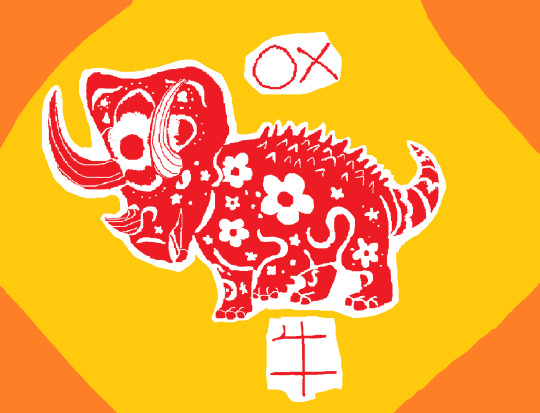



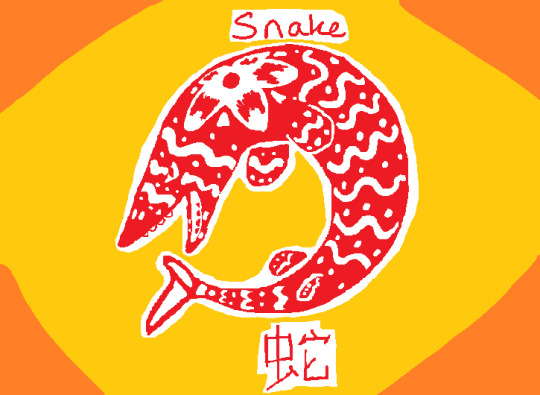
Prehistoric Zodiac
Part 1/ Part 2
Ceratogaulus, Triceratops
Smilodon, Nuralagus
Quetzalcoatlus, Mosasaurus
#paleontology#paleoart#chinese zodiac#Zodiac#animals#Dreambob's art#happy new year!!#I'm sorry about the Mandarin#I'm trying to learn Mandarin#I get easily confused between simplified chinese characters and traditional chinese characters
107 notes
·
View notes
Text
Round 1.2

Information about contestants below!
Horned gopher (Ceratogaulus sp.)
Horned gophers are extinct rodents that lived from the late Miocene to the early Pliocene epochs. They had two horns; these were large (in comparison to body size), paired, and originated from the nasal bones. Horned gophers are the smallest known horned mammals and the only known rodents ever to have had horns.
The role of the horns is subject to much speculation. Several functions have been hypothesized including digging, mating displays or combat, and defense from predators. The horns are not sexually dimorphic and multiple analyses support a role in defense.
In other respects, horned gophers most resembled modern marmots. They were approximately 30 cm long, and had paddle-like forepaws with powerful claws adapted for digging. They also had small eyes, and probably had poor eyesight, similar to that of a mole. These features, and morphology analyses suggest that they were likely burrowing animals.
Common degu (Octodon degus)
It has yellow-brown fur above and creamy-yellow below. The tail is long, thin, with a tufted, black tip. Its cheek teeth are shaped like figures-of-eight, hence the degu's genus name Octodon.
Degus are highly social. They live in burrows, and, by digging communally, they are able to construct larger and more elaborate burrows than they could on their own. Females living in the same group nest communally and nurse one another's young. Unlike most other rodents, male common degus also take part in protecting and raising their pups. They are strictly herbivorous.
Degus exhibit a wide array of communication techniques. They have an elaborate vocal repertoire comprising up to 15 different sounds. Degus are diurnal and have good vision, they are extremely intelligent and have a good ability to solve problems. After initial interest as research subjects, they have become popular as pets. The average lifespan in captivity is around 6-8 years.
#round 1#rodentcompetition2023#horned gopher#common degu#tournament poll#poll in which I have a favourite
21 notes
·
View notes
Text
Dude what if tiefling and fiend horns are like rhino horns? Like, attached to the skin, not the skull? (You can tell where the horn attached in life from the skull, though, because it has flattened, bumpy sections for supporting the base.)
Incidentally, there is a distant relative of primates that had horns: the gophers of the extinct genius Ceratogaulus. (Rodents and primates are distantly related—rabbits are also in there, much closer to rodents than to primates of course.) Unfortunately theirs grow out of the bridge of their nose, which in humans would restrict you to tiny spikes.
0 notes
Text
youtube
Video by PBS Eons: When Rodents Had Horns:
These odd rodents belong to a genus known as Ceratogaulus, but they’re more commonly called horned gophers, because, you guessed it, they had horns. And it turns out the horns probably had a purpose - one that rodents would likely benefit from today.
#Rodents#Science#biology#paleontology#zoology#evolution#evolutionary biology#stem#Ceratogaulus#Youtube
124 notes
·
View notes
Text

I almost forgot to include any rodents in this series, so I quickly googled some extinct rodents and discovered Ceratogaulus hatcheri, or the “horned gopher.”
Ceratogaulus is the only known rodent genus with horns, the smallest known mammal with horns, and (alongside the Peltephilus, or “horned armadillo”) one of the only known burrowing mammals with horns. Yet the purpose of their horns are the subject of debate. Due to their position and orientation, it was unlikely they were used for digging, and they were not sexually dimorphic, so it’s also unlikely they were used for mating displays. They may have been used for combat, or for defense from predators. I imagine a snake would find a gopher with spikes on its nose to be a bit more than a mouthful.
Ceratogaulus was not quite a foot long, with small eyes and long claws. It lived from the late Miocene to early Pliocene in the southern US.
#my art#SaritaDrawsPalaeo#Ceratogaulus hatcheri#Ceratogaulus#Horned Gopher#rodents#mammals#therapsids#synapsids
36 notes
·
View notes
Photo

Ceratogaulus!
Available on Redbubble!
7 notes
·
View notes
Photo

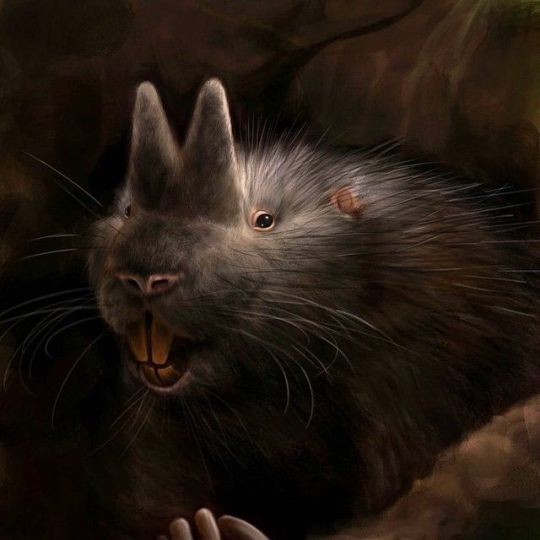
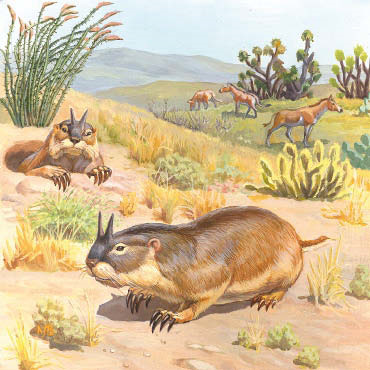

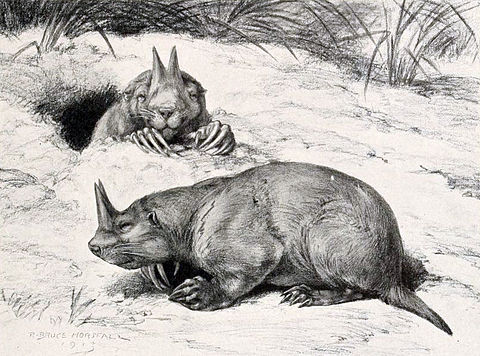
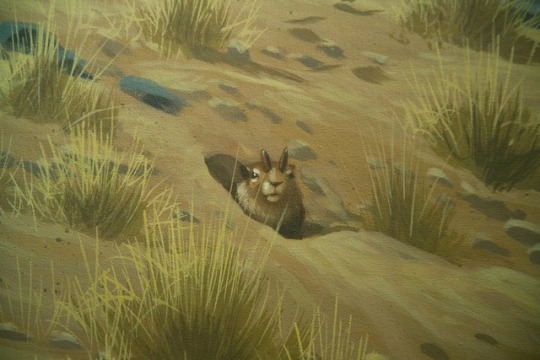




Horned gophers are extinct rodents from the genus Ceratogaulus. The horned gopher had two horns; these were large (in comparison to body size), paired, and originated from the nose. Horned gophers are the smallest known mammals to ever have horns, and the only known species of horned rodents, and apart from one fossil species of armadillo, the only known burrowing horned mammals. They were native to what is now the Great Plains of North America, most concentrated in Nebraska. Ceratogaulus lived from the late Miocene to the early Pleistocene epoch.
The role of the horns of Ceratogaulus is subject to much speculation. Possibilities include digging (although this has largely been ruled out by the horns' position and orientation; see below for a more detailed analysis), mating displays or combat, and defense from predators. Because the horns were not sexually dimorphic, their role in defense seems most likely. In most other respects, the animals resembled modern marmots. They were just under 1 foot long, and had paddle-like forepaws with powerful claws adapted for digging. They also had small eyes, and probably had poor eyesight, similar to that of a mole. These features suggest that they were likely to be burrowing animals.
The nasal horns of Ceratogaulus are inconsistent with use as a digging tool. Ceratogaulus horns are positioned on the posterior ends of the nasal bones and extend dorsally, perpendicular to the plane of the palate. As a result of their posterior position, using the horns to dig would bring the anterior tip of the nasals against the substrate after a very short sweep of the horns, making digging with the horns extremely inefficient. The shape of the horn itself is also very poor for a digging tool. The horns are very thick and broad with large, flat anterior and posterior surfaces. Dragging such a broad tool through the soil would create immense resistance, proportional to the large surface area presented to the substrate. Finally, the Ceratogaulus horn becomes more posteriorly positioned through time, so that the evolutionary trend is towards a horn which becomes more poorly suited to digging through time, rather than better suited. Thus, the argument that the horns functioned in digging is not supported by the morphology or the evolutionary progression.
Many of the objections that apply to the horns as a digging implement also apply to the use of the horns in sexual combat. Their orientation and position and the morphology of the rest of the skull make it exceedingly difficult to bring them to bear on an opponent of similar size. Many ungulates with horns ill-suited to sexual combat still use them for combat or for sexual display. However, a sexually selected use of the horns is unlikely in Ceratogaulus, as the optic foramen is very small. The small size of the optic foramen indicates extremely poor visual acuity, meaning the females would be unlikely to be able to visually recognize a winner in any sexual displays or sexual combat by the males.
Horns are used in defense against predators by almost all horned mammals. Animals will use any weapons at their disposal to fight off predators, and the horns of Ceratogaulus are well suited to defense. The horns are broad and robust, and their dorsal orientation and relatively posterior position makes them well suited to protecting the vulnerable eyes and neck. By elevating the head dorsally, the horns would be snapped backward, protecting the areas most commonly attacked by predators. A similar use of posterodorsal horns has been indicated to decrease predation in horned lizards. As the horns grow taller through evolutionary time, they also become more posteriorly positioned and the height of the occipital plate increases, increasing the leverage for lifting them. By positioning the horns more posteriorly, the output lever is shortened and, because the muscles used to rotate the skull dorsally attach at the top of the occipital plate, the input lever is lengthened. Thus, the dorsal strike with the horns would be more powerful as the ratio of output lever to input lever would be increased. Predation is the dominant cause of mortality in most small mammals, so the benefits provided by a mechanism to reduce predation could offset the substantial evolutionary cost of horns in a fossorial mammal.
104 notes
·
View notes
Photo

Animal Alphabets week 3: The Ceratogaulus better keep those conspiracy theories to himself.
#animals#extinct animals#animal alphabets#digital art#gopher#Ceratogaulus#conspiracy#conspiracy theory#tinfoil#tinfoil hat
2 notes
·
View notes
Text
Tarih Öncesinde Yaşamış İlk Memeliler

Dünyamızdaki ilk memeliler çok uzun zaman önce yaşa kadar Tıpkı günümüzdeki memeliler gibi onlarında kürkü vardı çoğu bugünkü memeliler gibi doğum yapar ve yavrularını süt ile beslerlerdi. İlk memeliler oldukça ufak boyutlardaydı ve dev dinozorların arasında yaşamayı sürdürebildiler. Çoğu memeli sadece geceleri ortaya çıkar ve gündüzleri güvende kalmak için saklanırdı.
Uintatherium: 50-45 milyon yıl önce yaşamıştı. En büyük memeli otoburlardan biridir. Boyu neredeyse 1 metre uzunluğundaydı. Çeneleri ise kemikleri kırabilecek kadar güçlüydü.
Indricotherium: 37 ile 23 milyon yıl önce yaşamıştır. Boynuzsuz gergedan karada yaşamış olan en büyük memelidir. Bu otobur memeli dört filin toplamından daha büyüktü. Neredeyse en büyük dinozor ile aynı boyda idi.
Ceratogaulus: Boynuzlu sincap yaşamış en ufak boynuzlu memeli 1 metre uzunluğunda ve 4 buçuk kilogram ağırlığındaydı.
Cimolestes: 72 ile 56 milyon yıl önce yaşamıştır. 66 milyon yıl önce tüm büyük dinozorlar yok oldu ve birkaç ufak memeli türü hayatta kaldı. Fakat tüm dinozorlar yok olduğu için artık saklamak zorunda değiller.
Alphadon: 75 ile 66 milyon yıl önce yaşamıştır. Milyonlarca yıl boyunca pek çok farklı şekil ve boydaki memeliler dünyayı doldurdular büyükler ligi bazı tarih öncesi memeliler çok büyüklerde büyük boyları sayesinde daha ufak düşmanları ile dönüşebilirler dünyanın ilk büyük memelisi günümüzdeki gergedan ile aynı boyda uzun fildişine benzer dişleri vardı Fakat sadece bitkileri yerlerdi.
Read the full article
0 notes
Text
jester having biologically accurate unicorn hamsters that are actually Ceratogaulus
12 notes
·
View notes
Note
Where can we find your google doc? Also is it possible that anjanath and deviljho are tyrannosaurs?
Hiya! The link for the Google doc is right here. I updated it earlier this week, so a ton of monsters and endemic life were newly added.
Now, on to your second question.
The short answer is: no to the deviljho, tentative yes for the anjanath.
Before we get to the long answer, I feel like I should give you a quick explanation for how my thought process works. Generally, I look at a monster and try to isolate its most distinctive features (morphology, diet, behavior, geographic range, etc), and from there see if any of these features line up with real-world animals. I usually end up in one of three scenarios:
Sometimes I get lucky because Capcom did their homework and designed a creature that’s like the archetypal-whatever, so it’s really easy to figure out its relationship to extant organisms.Example: The kelbi is an artiodactyl (an even-toed ungulate) in the infraorder Pecora, more specifically an antilocaprid or (less likely) a cervid.
Sometimes a monster looks like it might belong to a specific group, but upon closer observation, it has one or more characteristics that violate the criteria for that group.Example: At first glance the sealord’s crestfish looks like an oarfish. So, case closed, right? Well, no. Oarfish are covered in easily-abraded guanine rather than scales. The sealord’s crestfish, on the other hand, has these honkin’ overlapping leptoid scales, which rules out that possibility. It’s likely not a crestfish (Lophotidae) either, again because it has scales, but also because lophotids have cloacal ink sacs, which as far as we know the sealord’s crestfish lacks. Also, lophotids are tropical, and last time I checked, tropical ecosystems don’t have ice sheets. We can at least still assume that the sealord’s crestfish is related to them in some way, which means the next step is to backtrack to the last highest taxon (Lampriformes) and see if it meets any of the requirements there. Which thankfully, it does. Lampriformes can have either naked skin or scales. This is the point where it’s safe to classify the sealord’s crestfish as a relative of the oarfish and true crestfish, within its own unique family (Mareridae).
The final scenario is one where a monster’s characteristics are so bizarre that I can’t find a real-world analog to compare it to. This is the scenario I spend most of my time dreading, because the phylogenetics for these monsters tends to veer toward hypothetical/speculative biology.Example: The vast majority of the Elder Dragons fit into this category—specifically, the six-limbed ones. I actually have a solution for that problem, but I’m gonna save it for separate post because the details are kinda…nightmarish.
Which brings us back to “Are the anjanath and deviljho relatives of the T. rex?”
(Full disclosure, I’m not exactly great at paleontology. Take anything I say with a grain of salt.)
Let’s start with the deviljho.

Hypothetical deviljho skeletal reconstruction, based on coelurosaur anatomy. | Source: u/Deerexy on r/MonsterHunter.
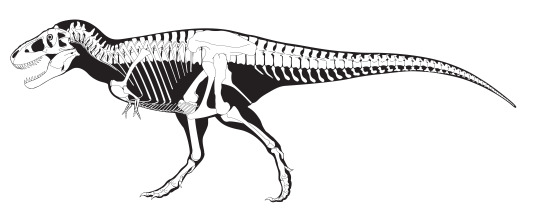
Tyrannosaurus rex skeleton diagram. | Source: Smithsonian Institute.
While the two share several key features (forelimbs of reduced size, two functional digits, four toes with the dewclaw suspended off the ground, elongated tibiae), they differ in enough ways that I’m hesitant to call them close relatives. The skull of tyrannosauroids has a tall premaxillary bone that’s blunted at the front of the snout and gradually sloped upward, with a smaller mandible. The front of the deviljho’s cranium, by contrast, looks to be either highly fused or compressed, with the parietal, postorbital, and premaxilla bones all part of a short upturned snout. The massive dentary is disproportionately larger and elongated, with these weird teeth/tubercle-like protrusions on the outside of the jaw. Originally I thought they were functionally analogous the external teeth of the dragonfish (Bathophilus indicus), but they’re too big and not recurved enough to be useful for prey-capture. So maybe they’re a fossorial adaptation like the horns on Peltephilus and Ceratogaulus? Dunno. Anyway, it’s not really relevant.
You’ll notice this skull shape is pretty consistent amongst all the tyrannosauroids.

Size comparison between several tyrannosauroid species. | Source: Wikipedia contributor user:Conty.
Despite a few visual similarities, I think it’s safe to rule out any chance of the deviljho being directly related.
The anjanath, on the other hand, is (probably) a tyrannosauroid. For the moment disregard the fact it breathes fire and focus on the overall morphology.

Anjanath concept art for Monster Hunter: World. | Source: u/Haru17 on r/MonsterHunter.
Seeing as we have no way to study its pelvis and look for the other tyrannosauroid features (concave notch on the ilium, a “boot” on the end of the pubis, etc.) we’ll have to rely on the skull, digits, and overall posture. Like the T. rex and its kin, anjanaths possess the same number of toes and fingers. Identical s-shaped neck, identical long tail, and the skull shape matches the silhouettes in the third image.
As for the paired dorsal sails and nasal crest? They can be easily explained away as derived traits. That inflatable sac in particular reminds me of the one seen in the Speke’s gazelle (Gazella spekei), which is used as a resonance chamber to amplify the honking alarm call it makes.
Hopefully this answered your question! I’m sorry it took so long to get back to you on it.
32 notes
·
View notes
Note
National Geographic Kids recently published a book that called Ceratogaulus a rhinoceros.
Come on NatGeo, you’re better than this.
(for reference: Ceratogaulus was a rodent, squirrels are among its closest living relatives)
- Henry
54 notes
·
View notes
Photo

C is for Ceratogaulus
46 notes
·
View notes
Photo
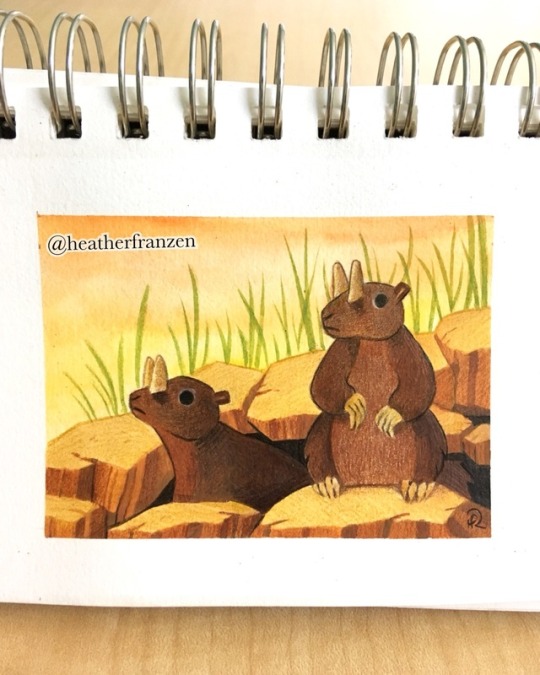
Animal Alphabets Extinct Edition! Ceratogaulus
25 notes
·
View notes
Text
Where’s that master-post of dumb looking animals that went extinct? like the one with a giant beaver with a giant tusk just obscurely on its face, the elephant relative with shovel on its bottom jaw? I need that post because I have the DUMBEST LOOKING EXTINCT THING THAT NEEDS TO BE ADDRESSED.
#extinct#extinct animals#ceratogaulus hatcheri#extinct animals master post?#god's deviant art stage?
0 notes
